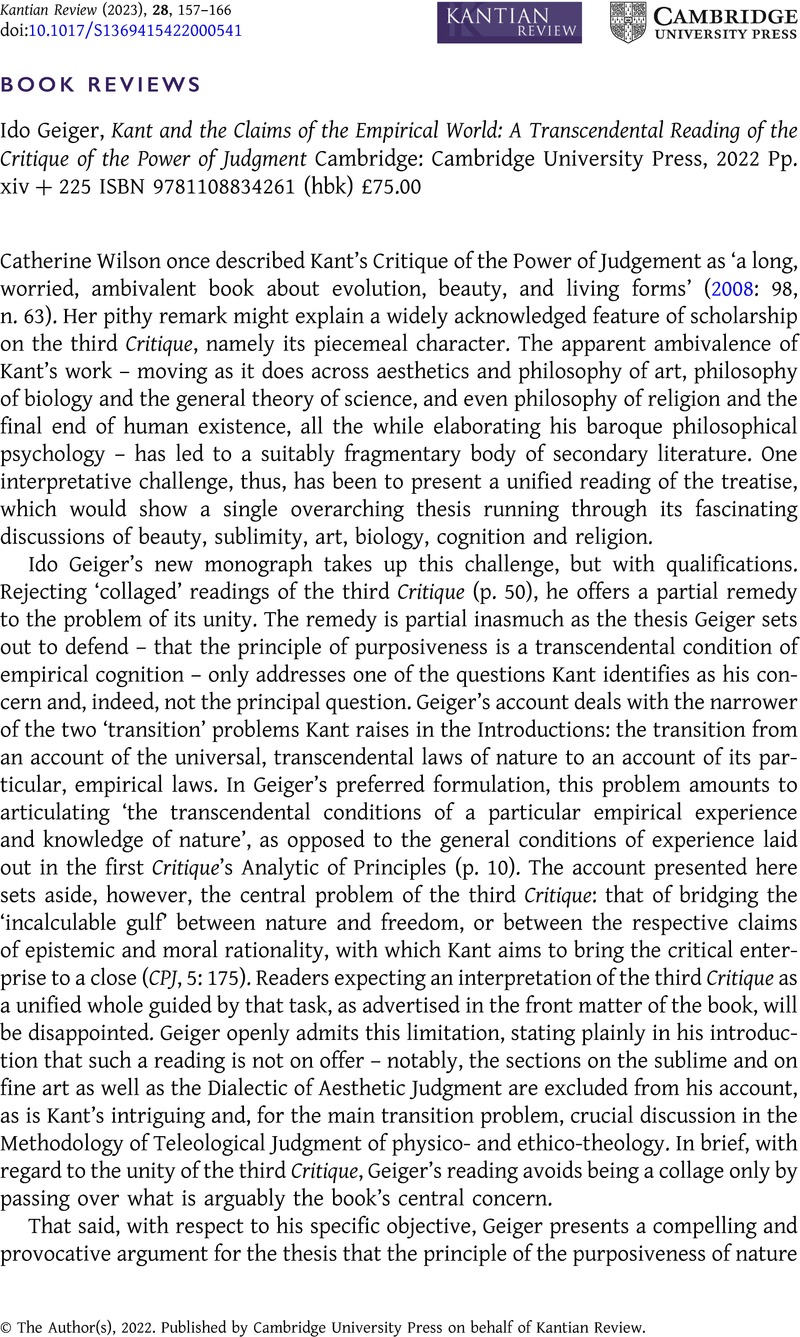No CrossRef data available.
Article contents
Ido Geiger, Kant and the Claims of the Empirical World: A Transcendental Reading of the Critique of the Power of Judgment Cambridge: Cambridge University Press, 2022 Pp. xiv + 225 ISBN 9781108834261 (hbk) £75.00
Review products
Ido Geiger, Kant and the Claims of the Empirical World: A Transcendental Reading of the Critique of the Power of Judgment Cambridge: Cambridge University Press, 2022 Pp. xiv + 225 ISBN 9781108834261 (hbk) £75.00
Published online by Cambridge University Press: 21 December 2022
Abstract
An abstract is not available for this content so a preview has been provided. Please use the Get access link above for information on how to access this content.

- Type
- Review
- Information
- Copyright
- © The Author(s), 2022. Published by Cambridge University Press on behalf of Kantian Review
References
Geiger, Ido (2003) ‘Is the Assumption of a Systematic Whole of Concepts a Necessary Condition of Knowledge?’ Kant-Studien, 94, 273–98.CrossRefGoogle Scholar
Ginsborg, Hannah (2015) The Normativity of Nature: Essays on Kant’s Critique of Judgment. Oxford: Oxford University Press.Google Scholar
Quarfood, Marcel (2014) ‘The Antinomy of Teleological Judgment: What it is and How it is Solved’. In Watkins, E. and Goy, I. (eds), Kant’s Theory of Biology (Berlin: De Gruyter), 167–84.CrossRefGoogle Scholar
Wilson, Catherine (2008) Epicureanism at the Origins of Modernity. Oxford: Clarendon Press.CrossRefGoogle Scholar
Zuckert, Rachel (2007) Kant on Beauty and Biology. Cambridge: Cambridge University Press.CrossRefGoogle Scholar



